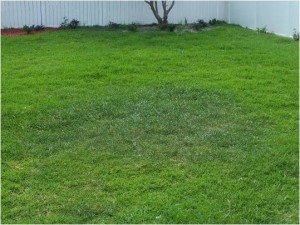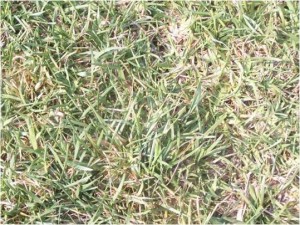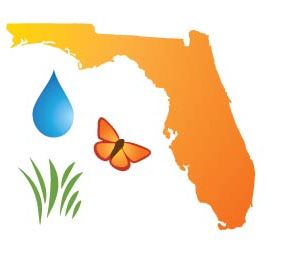
by Blake Thaxton | Jun 4, 2013

As of January 2014 all companies applying fertilizer, commercially “for hire”, will be required to hold a fertilizer applicators license. In order to obtain this license you must first become GI-BMP certified.
2014 isn’t that far away. Take the time to attend class this summer. Don’t wait to the last minute and have to scramble to find a training close to home.
What are Green Industries Best Management Practices?
GI-BMPs teach environmentally safe landscaping practices that help conserve and protect Florida’s
ground and surface waters and natural resources. This science-based educational program for
Green Industry professionals is brought to you by the UF/IFAS Florida-Friendly LandscapingTM
program and the Florida Department of Environmental Protection. Other FAQs about GI-BMPs
June 28th – Santa Rosa County
Navarre Community Center: 1917 Navarre School Rd Navarre, FL 32566
For more information email Blake Thaxton at bthaxton@ufl.edu
by Eddie Powell | May 20, 2013
Protecting new vegetable transplants in the garden can be very challenging for most gardeners.
Continue below for a few tips that will make transplanting vegetables more successful:
- Create A Collar: A collar can be made from a bottomless plastic cup or a waxed cardboard carton to protect transplant from cutworms. The collar should extend one inch above and below the surface of the ground.
- Row covers can be placed at planting to keep insects out. Remember to leave plenty of excess material for the growing vegetable plants. Remove the row cover when plants that need bees for pollination begin to flower.
- Make sure to plants stay in a continuously growing state and in a state of good health by supplying appropriate amounts of water and fertilizer. A healthy plant is more than likely going to survive an insect attack than a sick plant. However, too much fertilizer can cause plants to be more inviting to aphids and whiteflies.
- Monitor or scout the garden twice weekly for pest problems. This means inspecting the vegetable plants from both the upper and lower foliage to the soil level. It is best to keep a record book on pest problems and the performance of different varieties. Also include photographs of insects, diseases and beneficial insects. Be sure to correctly identify the insects.
- The ability to identify beneficial insects of the garden is important (praying mantis, spiders, big-eyed bugs/assassin bugs, lady beetles, and all wasps). Plant flowers in the vegetable garden that provides nectar and pollen which will attract beneficial insects.
- Most large insects like caterpillars can be removed by hand and destroyed.
- Watch for disease symptoms early and remove any diseased leaves or plants to the prevent problem from spreading. Most plants that produce fruits, pods, or ears can stand up to 20 percent loss of leaves without loss of potential yields. Do not panic and start spraying at the first sign of leaf feeding or a sick looking plant. Call or visit your local University of Florida Extension Service for recommendations on controlling any vegetable insect or disease problem.
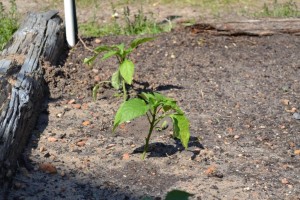
Image Credit Eddie Powell
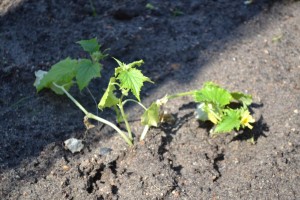
Image Credit Eddie Powell
By Eddie Powell
by Matthew Orwat | May 9, 2013
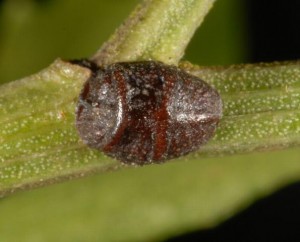
Adult Scale – Image Courtesy Lyle Buss
Many different species of scale insect infect citrus in North Florida, and mid spring is usually when gardeners notice them on their fruit trees and ornamental shrubs. Many different species of scale affect Florida homeowners and cause a host of problems in the garden and landscape. Citrus is particularly prone to scale infestations in North Florida.
The Satsuma Tangerine, Citrus unshiu, is currently a fruit that is highly prized by home gardeners in North Florida. Now is the time to act to prevent heavy scale infestations since weather is warming and control methods cannot be used when daytime temperatures are very hot. This pest has already been observed at multiple locations throughout the Florida Panhandle in both home gardens and commercial production areas.
Scale often reduces tree vitality by ingesting sap that would otherwise be used by the tree for growth and fruit production. They may also cause premature fruit drop and defoliation. A secondary pest that may occur as result of Scale is Sooty Mold. Sooty Mold lives off of the surgery secretions of the scale and can cause citrus leaves to look black and eventually drop.
The good news is that Scale is relatively easy to control when managed in winter or early in the spring growing season. From October through mid-May growers should use Horticultural Oil to control scale, particularly horticultural oil containing petroleum products. These products deprive scale insects of oxygen. This will smother them, but dead insects will need to be washed off if complete removal is desired.
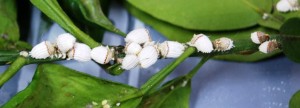
Cottony Cushion Scale – Image Courtesy Matthew Orwat
Applications should be timed correctly since horticultural oil applications can burn plants once the outdoor temperature reaches 94 ® F. A good rule of thumb is to apply horticultural oil on cool and cloudy days to minimize leaf damage. Always consult the label of each individual product before application and never apply more than the recommended amount. This last statement is especially crucial for horticultural oil applications, since increased rates are highly likely to damage plants. For more information, please consult this UF / IFAS publication on Citrus Scale and the Citrus Pest Management Guide.
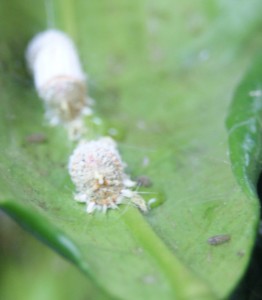
Cottony Cushion Scale – Image Courtesy Matthew Orwat
by Roy Carter | May 3, 2013

Image Credit: UF / IFAS
A beautiful lawn can add substantial value to a home. While providing an attractive setting for landscape ornamentals, a good lawn will reduce weed growth and prevent erosion. Selecting the proper grass for a specific location is a basic key to attaining these goals.
Five lawngrasses are commonly grown in Florida. Saint Augustine, Bahia, Centipede, Zoyia are most popular, while Carpet is used less often. This article will offer some facts which could assist the home gardener in choosing the best home turf species.
The most important thing to consider when selecting a lawngrass is the compatibility of that grass with the soil, climate, and growing conditions of a specific area. For example, along the coast a salt tolerant grass such as Saint Augustine should be planted. Attempting to grow Centipede or Bahia is asking for trouble. These grasses might be able to be established in a coastal location, but only with considerable expenditures of time and money. Likewise, if grasses are needed for a shaded lawn, plant Saint Augustine or Bahia, not Bermuda, which requires full sun.
After it is determined which lawngrasses will grow well in a given area, one should be chosen that is able to be managed properly. No lawngrass is maintenance free, but some types do require more care than others. For example, Bermuda produces the most beautiful lawns, but only if it’s heavily fertilized, frequently mowed, and kept free of pests and diseases. If a high level of maintenance cannot be provided, it would be wise to plant a low care grass, such as Bahia, or Centipede. Saint Augustine is not difficult to maintain, but thatch and chinch bugs are common problems.
The amount of water a particular grass requires is another consideration. Bahia has excellent drought tolerance Saint Augustine ranks second and Centipede ranks third.
In recent year, dramatic improvements in Zoysia grass have been made by turfgrass breeders. These improvements include insect resistance, accelerated establishment, and overall performance. Zoyiagrasses are adapted to a variety of soil types and have good tolerance to shade, salt, and traffic. They provide and extremely dense sod that resist weed invasion, but certain pest can be problematic.
Out of all Florida Lawngrasses, Bahia is most resistant to pests. It’s the best choice for landscapes heavily infested with nematodes. Saint Augustine also has good nematode tolerance, but chinch bugs are a serious threat to this grass. While it may be severely damaged by nematodes, Centipede has few other pest problems, providing it is not fertilized to heavily. Bermuda is plagued by many problems, in fact, it’s particularly impossible to grow this grass without a continuous control program to cope with nematodes, insects, and diseases.
A a number of good lawngrasses grow well in Florida, but each has certain advantages and disadvantages as well as specific cultural requirements. Area climate, landscape soil type, amount of home site shade and sun, and the degree of traffic by people and pets are important considerations when choosing home lawn truf types.
Information was provided by J. Bryan Unruh, Associate Center Director and Professor, West Florida Research and Education Center, Institute of Food and Agricultural Science, Jay, Florida.
Also, feel free to contact your local county extension agent or refer to these UF / IFAS publications on trufgrass selection.
For more information on choosing a lawngrass contact the author Roy Lee Carter, County Extension Director – Gulf County Florida, at
639-3200.



